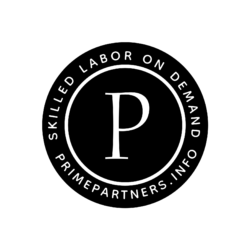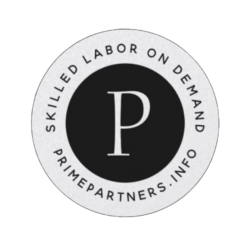AV Technician Interview Guide
Overview of Required and Recommended Certifications, Educational Background, and Industry Qualifications
To excel as an AV Technician, candidates should possess a blend of education, certifications, and hands-on experience. Below are the key components that can enhance a candidate’s profile:
Educational Background
- High School Diploma or GED: Minimum requirement for entry-level positions.
- Associate or Bachelor’s Degree: Degrees in electronics, audio engineering, broadcasting, or related fields can be advantageous.
Certifications
- Certified Technology Specialist (CTS): Offered by AVIXA, this is the most recognized certification in the AV industry and covers general knowledge of AV systems.
- CTS-D (Design) and CTS-I (Installation): Advanced certifications for those specializing in system design or installation.
- CompTIA A+ or Network+: These certifications are beneficial for understanding computer systems and networking, which are increasingly integral to AV solutions.
- Audio Engineering Society (AES) Certifications: Useful for those focusing on the audio aspect of AV technology.
Industry Qualifications
- Experience with AV Software and Equipment: Familiarity with platforms like Crestron, Extron, and AMX control systems.
- Proficiency in CAD Software: Useful for designing AV systems.
- Vendor-Specific Training: Training from manufacturers such as Bose, Shure, or Harman can provide specific product knowledge.
Interview Questions and Answers
Technical Questions
1. How do you troubleshoot an audio feedback issue during a live event?
Answer:
- Identify the Source: Check microphones and speakers for proximity issues. Feedback often occurs when a microphone picks up sound from a speaker.
- Adjust Microphone Gain: Reduce the gain on the microphone that is causing feedback.
- Use Equalizers: Adjust the equalizer settings to cut the frequencies that are feeding back.
Example:
- During a corporate conference, feedback started when a speaker moved closer to the audience. I quickly lowered the microphone gain and adjusted the EQ settings to attenuate the problematic frequency, eliminating the feedback without disrupting the event.
Best Practices:
- Do: Always perform a soundcheck before the event to identify potential feedback frequencies.
- Don’t: Avoid making drastic changes during the event unless absolutely necessary, as this can lead to other issues.
Follow-up: An interviewer might ask about specific frequencies that commonly cause feedback, prompting a discussion on the use of frequency analyzers.
2. Describe the process of setting up a video conference system.
Answer:
- Assess Room Acoustics and Layout: Determine the best location for microphones, cameras, and screens.
- Install Hardware: Set up cameras, microphones, and speakers in optimal positions.
- Connect to Network: Ensure the system is connected to a reliable network with sufficient bandwidth.
- Configure Software: Set up the conferencing software, test connections, and adjust settings for video and audio quality.
Example:
- For a mid-sized company, I set up a video conferencing room by placing microphones on the table and wall-mounted cameras to cover the entire room. I tested the system with multiple endpoints to ensure quality and reliability.
Best Practices:
- Do: Use high-quality microphones with noise-canceling features to improve audio clarity.
- Don’t: Avoid placing cameras where they can be obstructed by furniture or participants.
Follow-up: The interviewer may ask about specific software platforms, such as Zoom or Microsoft Teams, and how to integrate them with existing AV systems.
Behavioral Questions
3. Tell me about a time you had to work under pressure during an event. How did you handle it?
Answer:
- Context: During a large-scale conference, a power outage occurred, affecting all AV equipment.
- Action: I quickly coordinated with the venue’s technical team to restore power while communicating with the event organizers to keep them informed.
- Outcome: Power was restored within minutes, and I conducted a quick systems check to ensure all equipment was functioning properly, allowing the event to continue with minimal disruption.
Best Practices:
- Do: Stay calm and communicate clearly with team members and organizers.
- Don’t: Avoid making assumptions about the cause; instead, methodically troubleshoot the issue.
Follow-up: An interviewer might probe deeper into how you prioritize tasks in such situations.
4. How do you prioritize tasks when managing multiple events?
Answer:
- Assess the Scope: Evaluate the complexity and requirements of each event.
- Resource Allocation: Assign team members and equipment based on priority and availability.
- Timeline Management: Create a detailed schedule with milestones for each event.
Example:
- When managing two simultaneous events, I prioritized the larger event with more complex AV needs, delegating smaller tasks to junior technicians for the smaller event.
Best Practices:
- Do: Use project management tools to track progress and deadlines.
- Don’t: Avoid overcommitting resources to one event at the expense of others.
Follow-up: The interviewer might ask about specific tools you use for project management and how you handle unexpected changes.
Situational Questions
5. If a client requests a last-minute change to the AV setup, how would you accommodate this?
Answer:
- Evaluate Feasibility: Determine if the change is possible given the current setup and resources.
- Communicate with the Client: Discuss limitations and possible alternatives with the client.
- Implement Changes: Execute the changes efficiently, ensuring minimal impact on the event schedule.
Example:
- A client requested additional microphones just before a panel discussion. I quickly repurposed microphones from a less critical area and informed the client of the adjustment.
Best Practices:
- Do: Maintain clear communication with the client and team members.
- Don’t: Avoid promising changes that cannot be realistically achieved.
Follow-up: The interviewer might explore how you handle situations where changes are not feasible.
Problem-Solving Questions
6. Describe a complex AV system you designed and implemented. What challenges did you face, and how did you overcome them?
Answer:
- Project Overview: Designed a comprehensive AV solution for a university auditorium, including sound, video, and control systems.
- Challenges: Integration of new equipment with existing infrastructure and ensuring ease of use for non-technical staff.
- Solutions: Conducted a thorough site survey, selected compatible equipment, and provided training sessions for staff.
Example:
- Challenge: Compatibility issues with existing projectors. Solution: Updated firmware and used compatible adapters to integrate new control systems.
Best Practices:
- Do: Ensure all components are compatible and tested prior to installation.
- Don’t: Avoid overlooking the importance of user training for system longevity and usability.
Follow-up: The interviewer might ask about specific technical specifications or software used in the project.
7. How do you stay updated with the latest AV technology trends?
Answer:
- Continuous Learning: Attend industry conferences, webinars, and workshops.
- Networking: Engage with other professionals through forums and social media.
- Research: Subscribe to industry publications and follow technology blogs.
Example:
- I regularly attend the InfoComm conference to learn about the latest AV products and technologies.
Best Practices:
- Do: Actively participate in professional organizations like AVIXA.
- Don’t: Avoid relying solely on outdated information or practices.
Follow-up: An interviewer might ask for examples of new technologies you’ve recently implemented.
Additional Questions
8. What are the common pitfalls in AV installations, and how can they be avoided?
9. How would you handle a situation where a piece of equipment fails during an event?
10. Describe your experience with AV control systems like Crestron or Extron. How do you program and troubleshoot these systems?
11. How do you ensure audio clarity and quality in large venues?
12. What steps do you take to maintain AV equipment?
13. How do you manage client expectations concerning AV capabilities and limitations?
14. Explain how you would integrate AV systems with IT infrastructure.
15. Describe a time when you had to learn a new technology quickly. How did you do it?
16. How do you ensure effective communication with non-technical stakeholders?
17. What strategies do you use to manage your time effectively during large projects?
18. How do you document AV setups and configurations for future reference?
19. Describe a time you had to collaborate with a team to solve a complex AV issue. What was your role?
20. How do you handle conflicting priorities or deadlines in your work?
This comprehensive guide should provide a strong foundation for preparing for an AV Technician interview, highlighting both technical prowess and soft skills necessary for success in this role.
More Audio Visual Interview Guides
Explore more interview guides for Integrated Systems positions.
Conference Room AV Specialist Interview Questions and Answers
This guide provides job seekers with a comprehensive overview of common interview questions for a Conference Room AV ...
Home Theater Installer Interview Questions and Answers
This guide provides job seekers with essential interview questions and answers for a Home Theater Installer role. It ...
Sound System Engineer Interview Questions and Answers
This guide offers a comprehensive collection of Sound System Engineer interview questions and answers, designed to pr...
AV Technician Interview Guide
The AV Technician Interview Guide prepares job seekers by offering insights into common interview questions, key skil...
Digital Signage Specialist Interview Preparation
This guide prepares job seekers for a Digital Signage Specialist interview by covering essential topics such as indus...
Recent Articles
Check out more articles from Best Electrician Jobs about getting hired inthe electrical industry.
The Ultimate Electrician Resume Guide (2025 Edition)
Step-by-step blueprint to craft a job-winning electrician resume—free Google Docs templates, mobile editing tips, and...
Best Job Board for Electricians
Discover the best job board for electricians! Boost your career with insights on salaries, training, and growth!
Improve Your Electrician Job Postings for More Applicants
Discover how to improve your electrician job postings for more applicants! Boost your career with insights on salarie...
What is the Highest Paying Electrician Role?
Discover the highest paying electrician roles and how to prepare for them. Learn about the skills and certifications ...
Industrial Electrician Careers in California
From manufacturing plants to data centers, industrial electricians play a vital role in California's economy. Discove...
Featured Jobs
-

- Company
- Prime Partners
- Title and Location
- Residential Journeyman
- Lynchburg, VA
- Employment Type
- FULL_TIME
- Salary
- $30.24-$32.48/HOUR
- Team and Date
- Residential
- Posted: 11/05/2025
-

- Company
- Prime Partners
- Title and Location
- Cable Puller
- Dublin, CA
- Employment Type
- FULL_TIME
- Salary
- $18.72-$23.78/HOUR
- Team and Date
- Commercial
- Posted: 11/05/2025
-

- Company
- Prime Partners
- Title and Location
- Senior Audio Visual Technician
- La Puente, CA
- Employment Type
- FULL_TIME
- Salary
- $42.89-$50.53/HOUR
- Team and Date
- Commercial
- Posted: 11/05/2025
-

- Company
- First Contracting
- Title and Location
- Journeyman Electrician
- Detroit, MI
- Employment Type
- FULL_TIME
- Salary
- $31.53-$38.18/HOUR
- Team and Date
- Residential
- Posted: 11/05/2025
-

- Company
- Prime Partners
- Title and Location
- Lead Security Technician
- Indianapolis, IN
- Employment Type
- FULL_TIME
- Salary
- $36.04-$44.52/HOUR
- Team and Date
- Commercial
- Posted: 11/05/2025
-

- Company
- Prime Partners
- Title and Location
- Electrician Helper
- Eureka, CA
- Employment Type
- FULL_TIME
- Salary
- $20.48-$26.58/HOUR
- Team and Date
- Commercial
- Posted: 11/05/2025
Best Electrician Jobs
Ready to get started?
Stop worring about manpower. And get back to what you do best.
Best Electrician Jobs is for Everyone
At Best Electrician Jobs, we are dedicated to fostering an inclusive environment that values diverse perspectives, ideas, and backgrounds. We strive to ensure equal employment opportunities for all applicants and employees. Our commitment is to prevent discrimination based on any protected characteristic, including race, color, ancestry, national origin, religion, creed, age, disability (mental and physical), sex, gender, sexual orientation, gender identity, gender expression, medical condition, genetic information, family care or medical leave status, marital status, domestic partner status, and military and veteran status.
We uphold all characteristics protected by US federal, state, or local laws, as well as the laws of the country or jurisdiction where you work.
 Best Electrician Jobs
Best Electrician Jobs